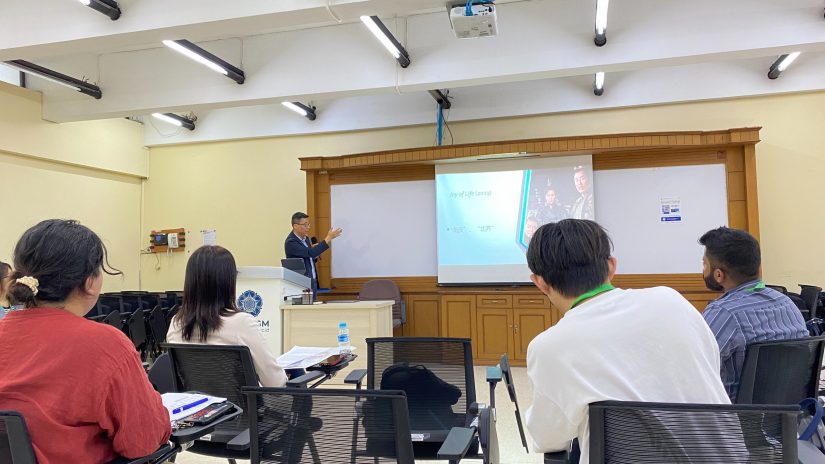
“Masculinity” is often associated with elements of maleness and virility. Men with muscular bodies, tall, piercing gazes, and wearing certain props labelled “for men” are often used to define what a “real” man looks like. Typically, this concept of masculinity takes a Western-centric perspective inherited through colonialism in the past and continues to be passed down today. In fact, the world is very diverse, and so are men. Each region has its own characteristics that cannot be generalised on the basis of universality. Men from Asia cannot be equated with men from Europe, and vice versa.This means that the “Western” definition of masculinity can no longer be considered relevant.
Aware of the diversity of masculinity in Asia, Jun Lei, Shaohua Guo, Geng Song and Salman Riyas sought to redefine Asian versions of masculinity at the AAS-in-Asia event on Tuesday 9 July. Through the panel “Reimaging Asian Masculinities in the Regime of Global Capital”, each of them showed how the definition of masculinity has changed in Asia. This shift is partly influenced by media consumption.
Jun Lei begins redefining Asian masculinity by examining China’s national media. She reveals how China’s national newspapers report on migrant workers and shape a distinctive new form of masculinity. Furthermore, Geng Song shows the shift of masculinity in Asia through digital-based entertainment media. Through digital spaces, a new form of masculinity is formed. This is also related to what Shaohua Guo said in his article, which highlighted how television shows have reincarnated when it comes to men. Men’s fashion and style are now more diverse and can be said to “bump” into previous standards of masculinity. Men who appear in the entertainment industry such as singers, actors, models, and so on, no longer take “Western” references when performing. They come with their own distinctive, Asian characteristics. The most representative example of this is male K-pop idols who have body proportions, style of dress, and makeup that are far from the lines of colonial masculinity.
Speaking about colonialism, Salman Riyas explained how colonialism in India had a strong influence on the definition of masculinity in society. However, this colonial legacy of masculinity has now been reduced by the media. The media no longer presents a Western-centric standard of masculinity, but has begun to showcase its Indian identity.
Seeing the media begin to highlight these forms of masculinity is a breath of fresh air for former colonies, especially Asia. The decolonial project of creating a new, localised version of knowledge is beginning to emerge. If this continues, universality, which is often accompanied by discrimination against vulnerable groups, can continue to be minimised.
Author: Laillia Dhiah Indriani
SDG 5 (gender equality)
